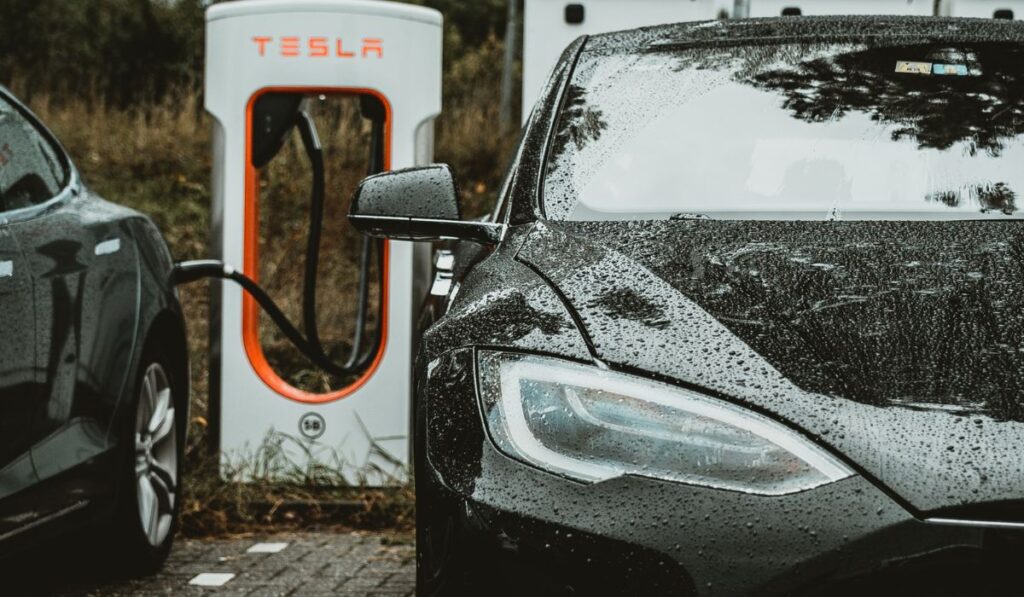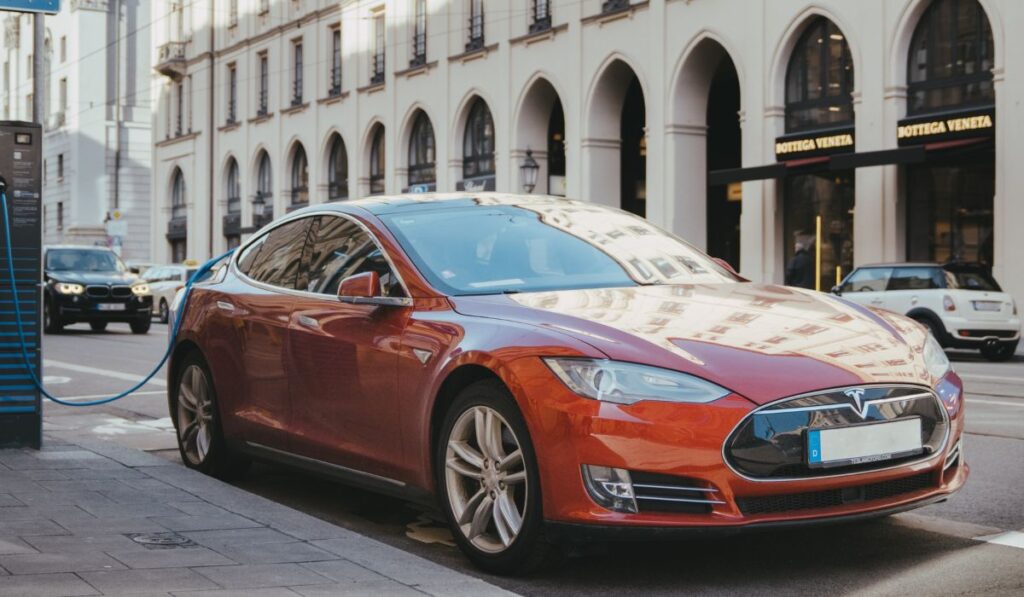Electric car owners know they’re much fun due to their instant torque, continuous system upgrades, and the convenience of at-home charging. Still, some things are a little confusing for newcomers. So, should you charge your electric car in the rain?
You can safely charge your electric car in the rain because the vehicle and its charging system are well-designed to withstand wet weather. EVs also have intelligent systems that monitor the charging process and cut the power supply if the computer detects a problem like moisture intrusion.
However, EV critics may tell you electric cars are just like regular cars. And for the most part, they’re right—you step on the right pedal, and the car moves; turn the wheel, and you can steer it. We say stuff like that all the time and agree the difference lies in the fueling vs. charging. Let’s get started so you know everything about charging in the rain.
Is it Safe to Charge an Electric Car in the Rain?

It’s perfectly safe to charge your electric car in the rain because engineers design EVs and their charging stations to withstand harsh weather conditions.
However, before being sold to consumers, they must pass the Society of Automotive Engineers and the National Electrical Manufacturers Association (NEMA) safety standards.
You’ve probably seen memes of flooded Tesla charging stations or pictures of EVs charging in the rain with creepy captions that could make you shriek and balk at owning one. But, to be blunt, we all know water and electricity shouldn’t mix, and expecting danger isn’t so farfetched.
Our brains are hardwired to shrink from ever mixing the two, which is why you could get a little nervous plugging a charging cord into your car while standing on wet pavement.
Doing it amid splashes of rain even seems worse, and your mind could conjure disastrous images of sparks, shocks, or even your car exploding.
But nothing could be further from the truth. Engineers are a smart bunch of people, and there are zero chances they didn’t think of the exact scenarios. As such, they design electric cars and their chargers with enough fail-safe and ground protection features.
Audi e-Tron
For example, the Audi e-Tron model has an IP (Ingress Protection) rating of 67 to show how well it can withstand solid and moisture intrusion.
The number 6 indicates these cars can withstand solid particles just as well as any other device, as the scale for solid intrusion is 1-6. For liquids, the scale runs from 1-8, and the e-tron has a rating of 7.
This means the Audi e-Tron is resistant enough against rain, but you don’t expect to submerge it one meter in water for more than 30 minutes like a buoy or some oceanographic equipment.
In the rare instance that rain splashes into the charging port and causes a short, the most likely scenario is that the charger system shuts off itself to prevent danger.
So come rain or shine, your EV is ready to top off and hit the road in no time. And even if it’s snowing, it’s business as usual. However, you don’t want the charging plug sitting in water or snow covering the charging port.
And no matter what kind of vehicle you’re in, you shouldn’t venture out during floods, hurricanes, and blizzards. So if you receive alerts that extreme weather conditions will happen soon, charge your vehicle immediately and prepare to evacuate.
You can also download apps that show you information on public charging stations along your route.
Is an Electric Car Charger Waterproof?
All electric car chargers and EV charging ports are designed to be water-resistant and weatherproof. So if you’re caught in the rain and need to charge your car, rest assured you can still do that safely in wet weather.
While it’s true that water conducts electricity and can damage electrical equipment, the design of electric car chargers allows them to work safely in various weather conditions. They can also protect against dust, oil, and other particles.
Materials used to make the chargers are waterproof, and the overall design ensures the chargers are sealed against moisture. This protects you, your car, and the charging station from potential damage.
Will an Electric Car Stop Charging if There is a Problem?
An electric car has intelligent systems that can detect malfunctions and relay data to the computer, so the car stops charging if it runs into a problem.
However, nothing usually happens when you plug your vehicle in well until the charging station and EV establish communications.
For example, the charging cord won’t be energized if you’ve not plugged in the vehicle correctly. Instead, current only flows once the computing system has determined it’s safe to proceed. And while at it, the EV monitors the charging process and stops it if there’s a disruption.
Can You Leave Your Electric Car on While Charging?

Unlike a gas-powered car which you can’t leave on while refueling, you can safely leave an electric vehicle on while charging. Think of an EV like your regular smartphone that you can use while plugged in.
Since no safety concerns are associated with leaving your car on while charging, feel free to use the infotainment system on the fly.
You can also leave the automatic climate control on so you’re assured of a comfy ride when you unplug and hit the road.
While you can leave your EV on while charging, the drivetrain is usually disabled automatically as a safety measure. You can even use the navigation system, but the car won’t move. This prevents damage to the vehicle, charging station, and charger.
The one drawback to leaving your car on while charging is that it could take longer to charge fully. Remember, systems like your infotainment are actively drawing power, and it takes time to compensate for that use.
